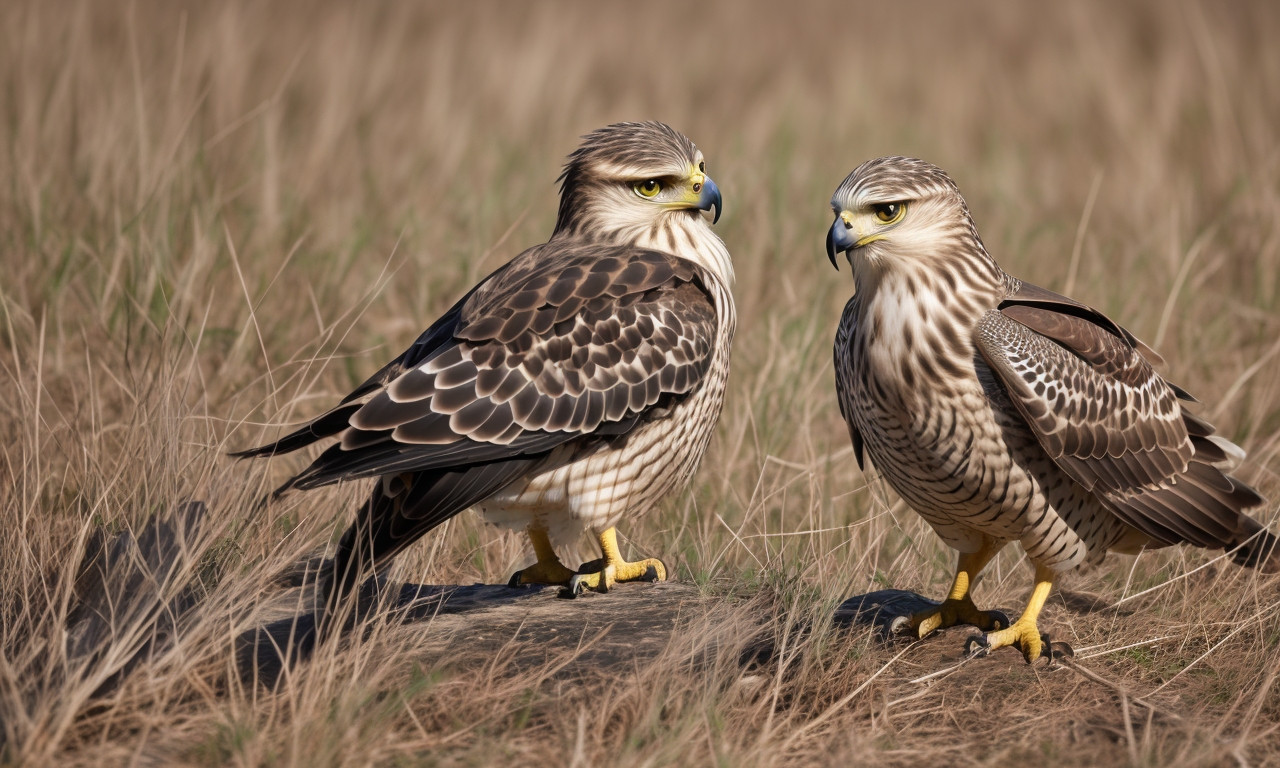The heart of the Natural State is home to soaring landscapes where majestic predators cut through the air with unparalleled grace—a realm where hawks, the avian lords of the skies, reign with a watchful gaze. Embark on a journey to discover the hawks of Arkansas, as we delve into the captivating world of these formidable birds of prey. In Arkansas’s rich tapestry of ecosystems, from the Mississippi Delta flatlands to the Ozark Mountains, these winged hunters play a crucial role in maintaining the balance of nature. Join us as we uncover the lives, habits, and splendors of these powerful raptors.
The Hawks’ Haven: Arkansas’s Diverse Habitats
The Tapestry of Terrain
Arkansas’s landscape is a mosaic of habitats, offering an abundant array of niches for hawks. The state’s ecological variety ensures that these predators thrive in different settings:
- Forested Uplands: A sanctuary for species such as the Red-tailed Hawk.
- Riverine Forests: Offering a haven for smaller species like the Sharp-shinned Hawk.
- Grassy Wetlands: Patrolled by the keen-eyed Northern Harrier.
- Rugged Mountains: Home to the elusive Broad-winged Hawk, especially during migration.
The Climate’s Embrace
With its temperate climate, Arkansas spurs a plethora of both resident and migratory hawks. The seasonal changes beckon a rotation of species, each adapted to distinct aspects of the state’s varying temperatures and conditions.
Related article; bird with red beak
Resident Raptors: The Year-Round Hunters of Arkansas
The skies of Arkansas are graced by resident hawks who call this land their permanent home. These birds are emblematic of the state’s natural heritage, with the Red-tailed Hawk standing as a testament to the adaptability and vigor of Arkansas’s predatory birds.
Related article; woodpeckers of indiana
The Iconic Red-tailed Hawk
A masterful hunter endowed with a banded tail that captures the essence of the wilderness, the Red-tailed Hawk exudes power and precision. Its presence is a testament to the health of our ecosystems, as it requires a rich tapestry of prey and perching sites to prosper.
Related article; red birds in florida
Hunting Tactics and Diet
The Red-tailed Hawk employs a stunning array of hunting methods, including:
Related article; georgia hawk
- Soaring high to scrutinize the terrain below.
- Perching with patience on high vantage points.
- Diving with breathtaking agility to capture prey.
With a diet as diverse as the habitats it occupies, this hawk hunts rodents, reptiles, and other small mammals, effectively controlling their populations.
Related article; falcons in michigan
Migratory Marvels: The Seasonal Visitors of the Arkansas Skies
The Spectacle of Migration
Each year, Arkansas’s skies are the stage for a remarkable phenomenon—the migration of hawks. From the Broad-winged Hawk to the Swainson’s Hawk, these birds undertake a perilous journey, traversing continents to exploit the state’s abundant hunting grounds.
Related article; finches in michigan
The Broad-winged Hawk’s Odyssey
During migration, the Broad-winged Hawk transforms the heavens into a ballet of wings. Observers are often rewarded with the sight of these raptors gliding in kettles, using thermal updrafts to conserve energy across vast distances.
Related article; types of ducks in florida
Understanding Hawks: Behavior, Ecology, and Identification
The Science of Raptors
Hawks are not mere birds; they are marvels of evolution, equipped with keen vision and agile flight. Understanding their behavior and ecology is key to appreciating their role in our environment.
Related article; owls in oklahoma
Adaptations for Predation
The hawk’s anatomy is a blueprint for predation, with features including:
- Binocular vision: For depth perception when diving after prey.
- Hooked beaks: Ideal for tearing flesh.
- Taloned feet: Dexterous for seizing and subduing moving targets.
Identification: A Birder’s Challenge
The art of identifying hawks can be daunting yet rewarding. Characteristics to observe include:
- Plumage patterns and coloration.
- Silhouettes and wing shapes during flight.
- Characteristic calls that pierce the landscape.
Conservation: Safeguarding the Future of Arkansas’s Hawks
With the splendor of these predators comes the duty to protect them. Conservation efforts in Arkansas focus on habitat preservation and addressing anthropogenic threats such as deforestation and pollution.
The Human Impacts
Our actions have consequences for hawks’ survival. Main threats include:
- Habitat loss: The encroachment of urban development on natural habitats.
- Pesticides: Chemicals that can bioaccumulate and poison hawks.
Encountering the Majesty: Where to Observe Hawks in Arkansas
For those longing to witness the grandeur of hawks, Arkansas offers a plethora of venues where these birds can be observed in their natural glory.
Prime Hawk-Watching Locations
- Holla Bend National Wildlife Refuge: a sanctuary for raptors.
- Mount Magazine State Park: where the sky’s canvas is painted with the wings of soaring hawks.
- Little Rock’s Pinnacle Mountain State Park, a hotspot for birdwatchers.
Arkansas Hawks Up Close: Species Spotlights
The Stoic Ferruginous Hawk
A bird of open plains, the Ferruginous Hawk boasts robust size and impressive strength. It exemplifies resilience, thriving in the broad expanses of Arkansas’s grasslands.
The Covert Cooper’s Hawk
Elusive as a whisper, the Cooper’s Hawk navigates the forest with aerial finesse. Its flight is swift, and its presence is a whisper among the trees, known mostly by the telltale signs of its predation.
Beyond Observation: Engaging with Hawk Conservation Efforts
Volunteer and Citizen Science
Hands-on participation is vital for conservation. In Arkansas, organizations such as the Audubon Society champion initiatives that invite the public to engage in hawk monitoring and protection.
Conservation Education
Equally important is the dissemination of knowledge about these raptors. Educational programs raise awareness and foster appreciation, ensuring that the hawks’ legacy endures for generations to come.
In conclusion, the hawks of Arkansas are not only symbols of the state’s wild beauty but also vital components of its ecosystems. By understanding and protecting these majestic predators, we preserve the intricate web of life that they represent. Let us cherish and safeguard the splendor of the Arkansas skies, ensuring that the sovereigns of the air continue to reign over their aerial domains.




